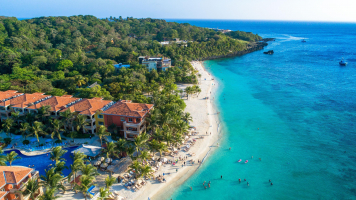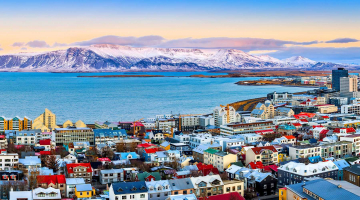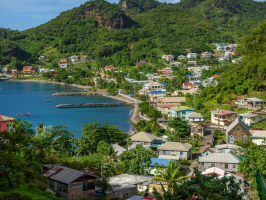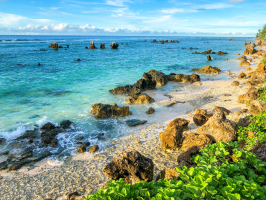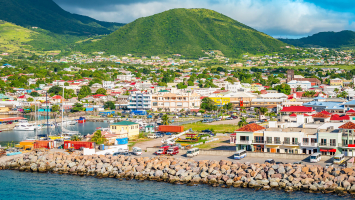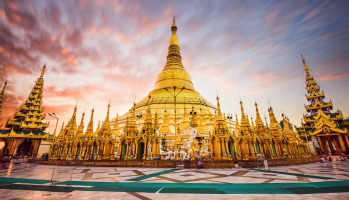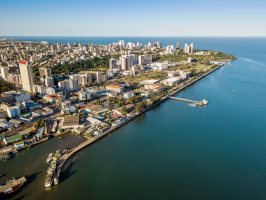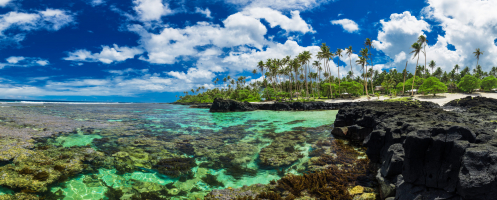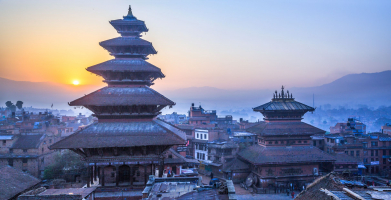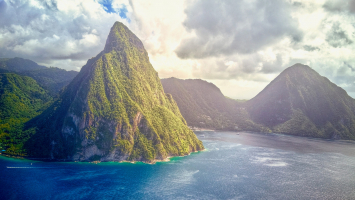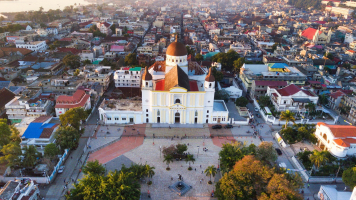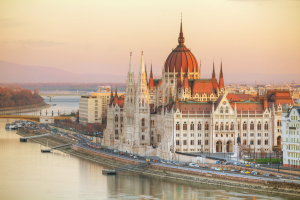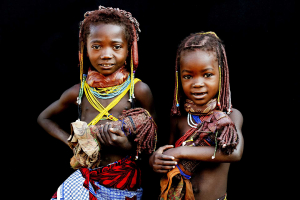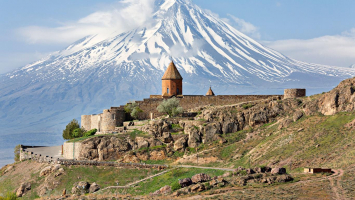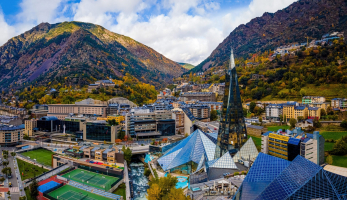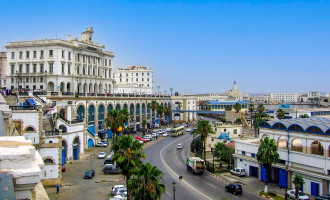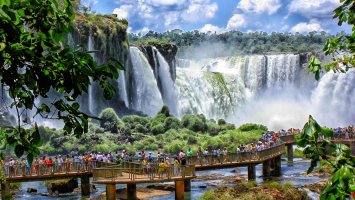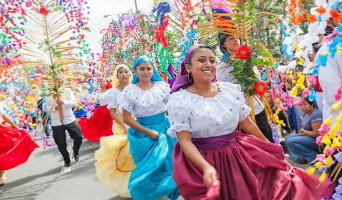Top 10 Unique Cultural Characteristics In Rwanda
Rwandan culture is diverse. Rwanda, unlike many other African countries, has been a unified state since precolonial times, inhabited by the Banyarwanda people ... read more...who share a common language and cultural heritage. Throughout the year, eleven regular national holidays are observed, with others added on occasion by the government. Here are some of the unique cultural characteristics in Rwanda that you can learn more about.
-
Kinyarwanda is Rwanda's national language and the first language of nearly the entire population. It is one of the official languages of the country, along with French, English, and Swahili. The educated deaf population in Rwanda uses Rwandan Sign Language. This can be considered as one of the Unique Cultural Characteristics In Rwanda that you should know.
From the time the country was under Belgian administration, between the First World War and independence in 1962, French was the language of administration. Since the 1994 genocide, the complexities of relations with successive French governments, as well as the return of many Tutsi refugees from anglophone Uganda, have resulted in an increase in the use of English by a larger proportion of the population and administration.
The government switched the medium of instruction from French to English in 2008. By 2018, the Rwandan government had introduced French as a foreign language class at the primary school level, and French was still widely used by members of the upper classes. According to Rwandan historian Antoine Mugesera, French is still used among the educated, but Kinyarwanda is used for simple topics and messages. Among other foreign languages, English is now regarded as the primary language.
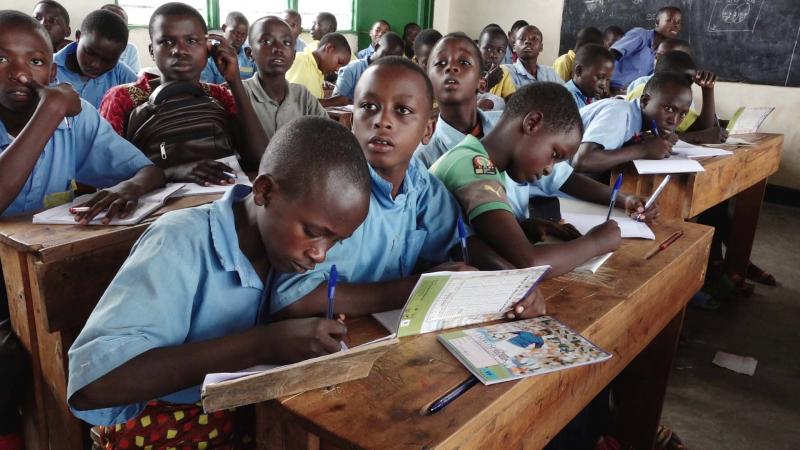
https://www.newtimes.co.rw/ 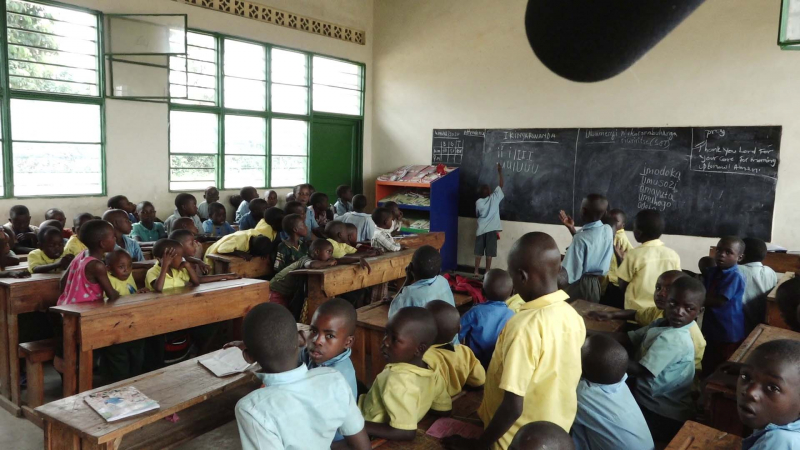
https://www.newtimes.co.rw/ -
Rwandan literature is oral and written literature in Kinyarwanda or French, primarily by Rwandans. Rwanda's literary history is primarily oral. Traditional texts were divided into two categories: more formal royal documents, known as 'official tradition,' and non-formal, popular literature. The distinction between these categories is based on whether or not the literature was officially controlled, rather than any value judgment about the content. Even today, storytelling and public speaking are highly regarded, and good storytellers are well-respected members of society.
There is very little literature written in Kinyarwanda (the country's native language), but there are a few books written in French. Alexis Kagame (1912-81) was a clergyman and historian who studied Rwandan oral history and published several volumes of poetry and Rwandan mythology. Saverio Naigiziki wrote an autobiography, Escapade rwandaise (Rwandan Adventure), as well as a novel, L'Optimiste (The Optimist), about a Hutu man and a Tutsi woman's marriage.
Benjamin Sehene (b.1959) wrote Le Piège ethnique (The Ethnic Trap) (1999) in the aftermath of the 1994 genocide, a study of what led to the genocide. He also wrote Le Feu sous la soutane (Fire Under the Cassock) (2005), a historical novel based on the true story of Father Stanislas, a Hutu Catholic priest who offered refuge to Tutsi refugees in his church before sexually exploiting the women and participating in massacres.
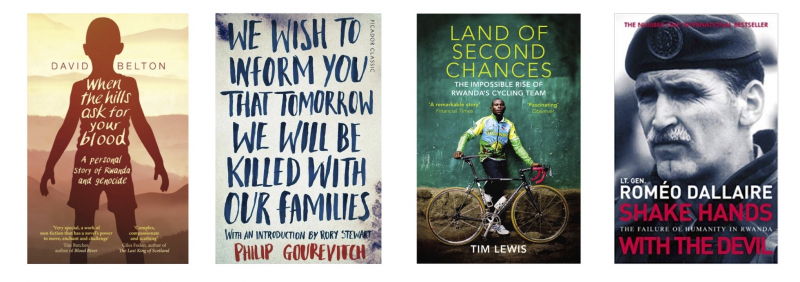
https://www.theslowcyclist.co.uk/ 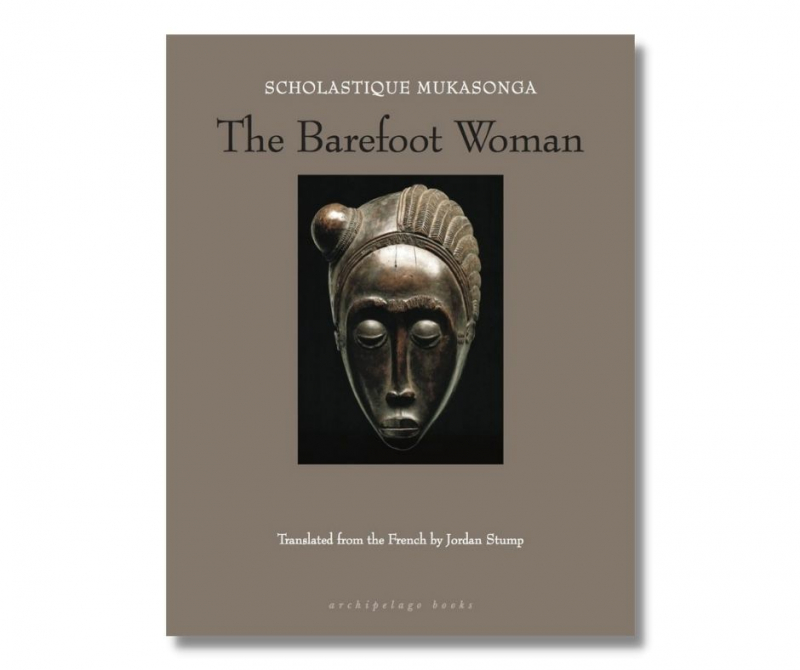
https://scholastiquemukasonga.net/ -
Nowhere in Africa has Christianity had such a profound impact as in Rwanda. Much of the egalitarian inspiration for the Hutu revolution came from the teachings of European clergy, and Catholic seminaries served as breeding grounds for Hutu leaders. More than two-fifths of the population is Roman Catholic, one-third is Protestant, and one-tenth is Adventist. Muslims, nonreligious people, and members of Christian schismatic religious groups make up less than one-tenth of the population.
There is also a small population of Baha'is and some people who follow traditional indigenous beliefs. Since the 1994 genocide, there has been a proliferation of small, usually Christian-linked schismatic religious groups. There are small and secretive Hindu and Buddhist communities, mostly comprised of foreign adherents. In Rwanda, neither religion seriously attempts conversion; however, there is a Hindu Temple of Rwanda as a place of worship.
In the country, foreign missionaries and church-linked nongovernmental organizations (NGOs) of various religious groups operate. Foreign missionaries openly promote their religious beliefs, and the government welcomes their assistance with development.
Rwanda's Constitution guarantees religious freedom, and the government generally upholds this right in practice. Local authorities have detained Jehovah's Witnesses for refusing to participate in security patrols. There were no reports of societal abuses or discrimination based on religious belief or practice in the United States in 2007.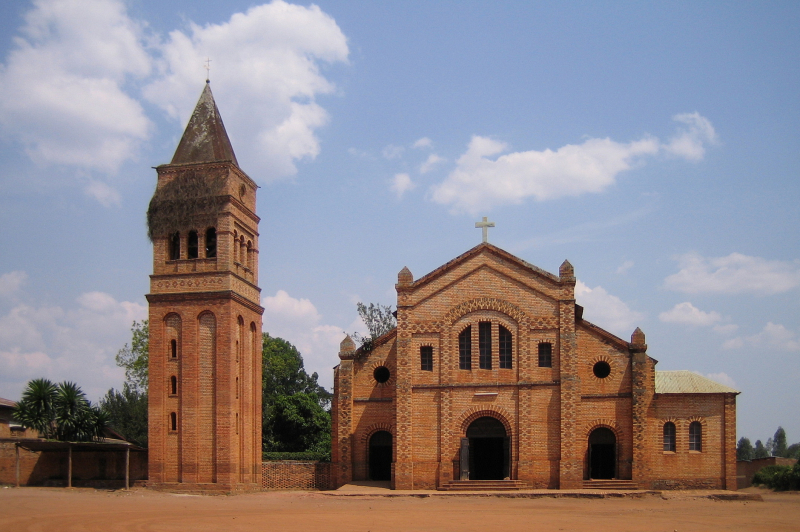
https://en.wikipedia.org/ 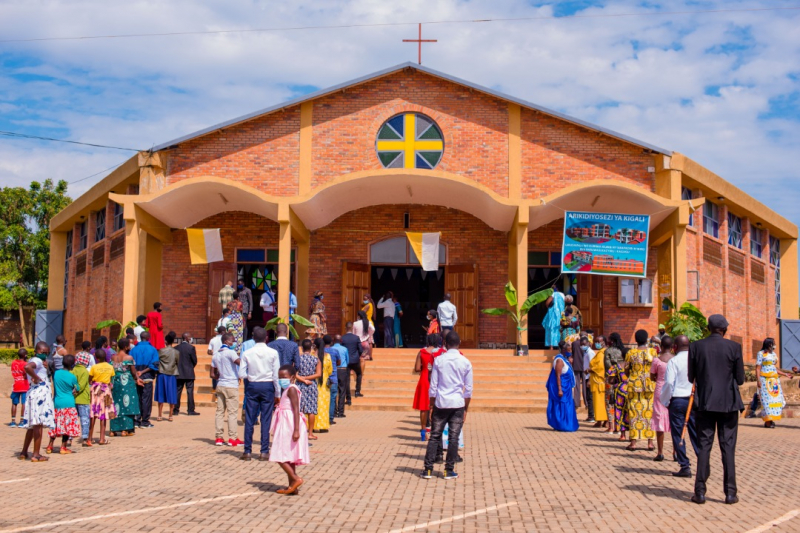
https://www.ktpress.rw/ -
Rwandan folk music traditions coexist with contemporary East African Afrobeat and Congolese ndombolo, as well as performers of a wide range of Western genres such as hip-hop, R&B, gospel music, and pop ballads.
The ikinimba is perhaps Rwanda's most revered musical tradition. It is a dance that tells the stories of Rwandan heroes and kings using instruments such as the ingoma, ikembe, iningiri, umuduri, and inanga. Many of Rwanda's most well-known musicians have played the inanga, a lyre-like string instrument, including Rujindiri, Sebatunzi, Rwishyura, Simparingoma, Sentoré, Kirusu, Sophie and Viateur Kabarira, and Simon Bikindi. It can be seen as one of the Unique Cultural Characteristics In Rwanda.
Rwanda produced popular local bands such as Imena, Nyampinga, Les 8 Anges, Les Fellows, Impala, Abamarungu, Los Compagnons de la Chanson, Bisa, Ingenzi, and Isibo y'Ishakwe during the post-colonial period. They drew inspiration from all over Africa, particularly the Congo, as well as Caribbean Zouk and Reggae.
Rwanda's music industry is gradually growing and becoming more professionalized. A growing number of businesses are investing in the development of new talent, such as the production of major music festivals such as Kigali Up! and Primus Guma Guma Super Star, as well as the music competition television show. Artists such as Meddy are now taking Rwandan music to new heights.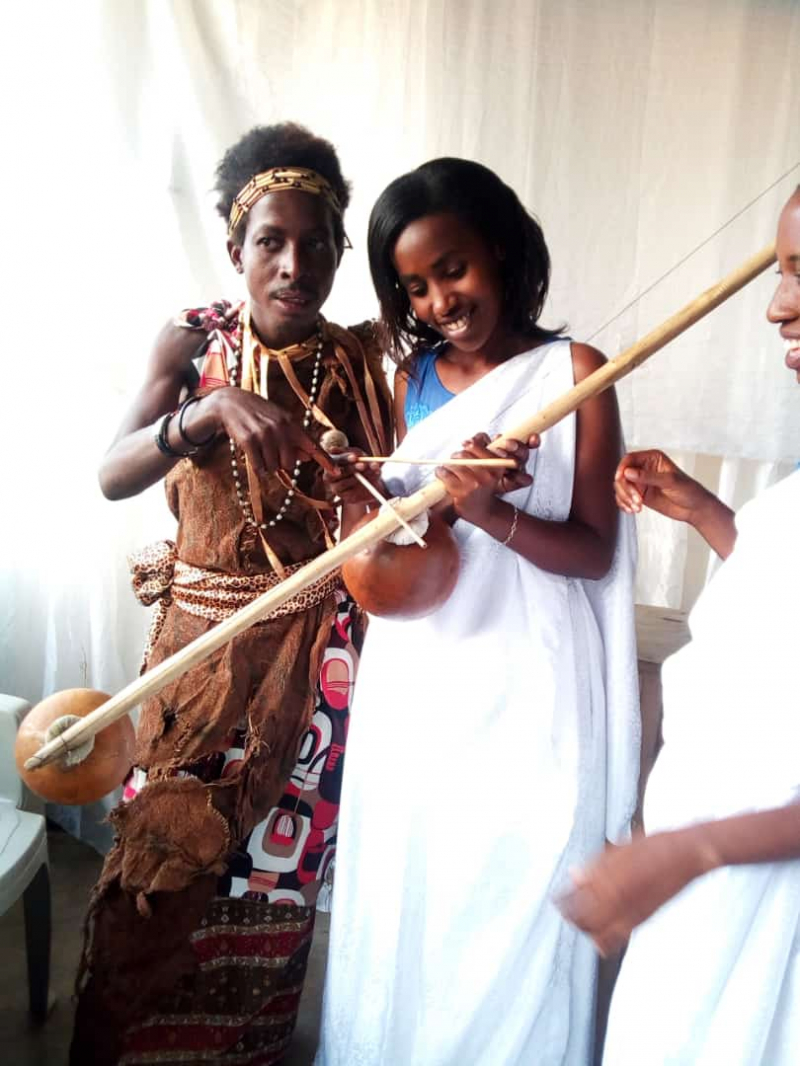
https://en.wikipedia.org/ 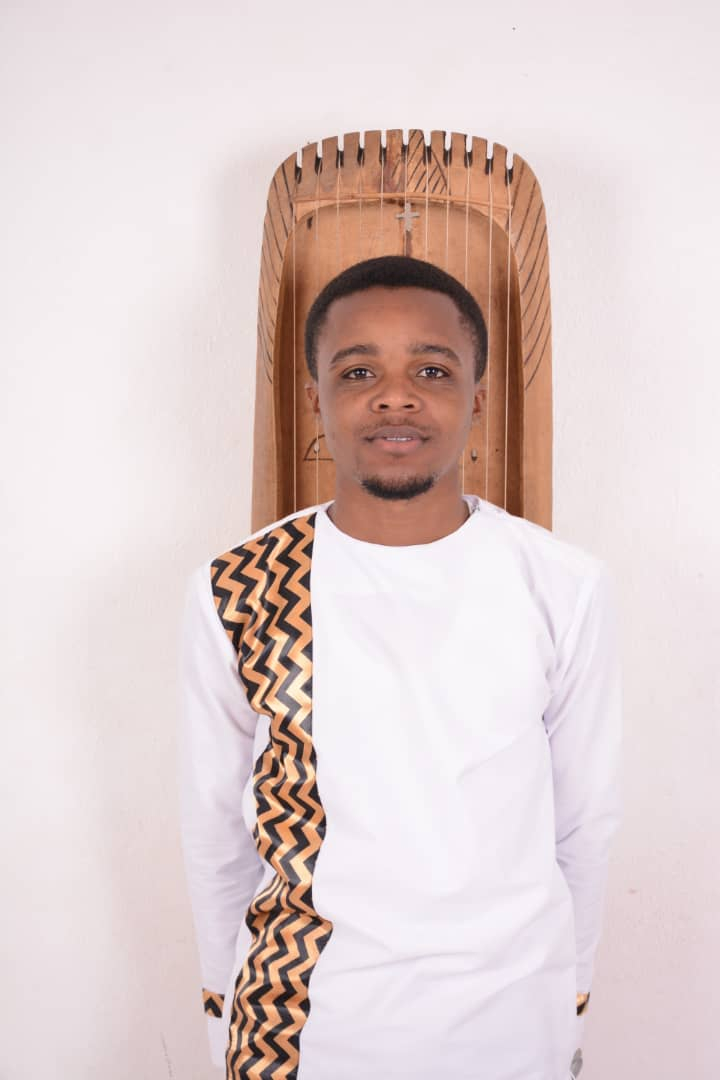
https://munyakazideo.com/ -
Rwandan ceremonies, festivals, social gatherings, and storytelling all include dance. The most famous traditional dance is Intore, a highly choreographed routine consisting of three components: ballet performed by women, heroic dance performed by men, and drums.
The Intore Dance Troupes put on the best performances of Rwanda's dynamic traditional musical and dance styles. The Intore (The Chosen Ones), who performed exclusively for the Royal Court several centuries ago, were given military training and taught the technique of jumping, which forms an important part of the dance. This dance, performed while wearing grass wigs and clutching spears, is a true Rwandan spectacle.
Live dance performances can be seen at cultural villages, museums, and many lodges and hotels throughout Rwanda. Regular performances are held at the Gorilla Guardians Village in Musanze and the National Museum of Rwanda. Furthermore, Rwanda has other famous traditional dances such as Imyiyereko dances, which are both individual and group dances, armed and pantomimic; dances performed by the women of the Banyamhumbya group; the Umuhamirizo warriors' dance, which was an armed, pantomimic group dance in which certain fighting and battle scenes were recreated; or the hoe dance, which is usually called by the name of the Imharamba dancers who perform it.
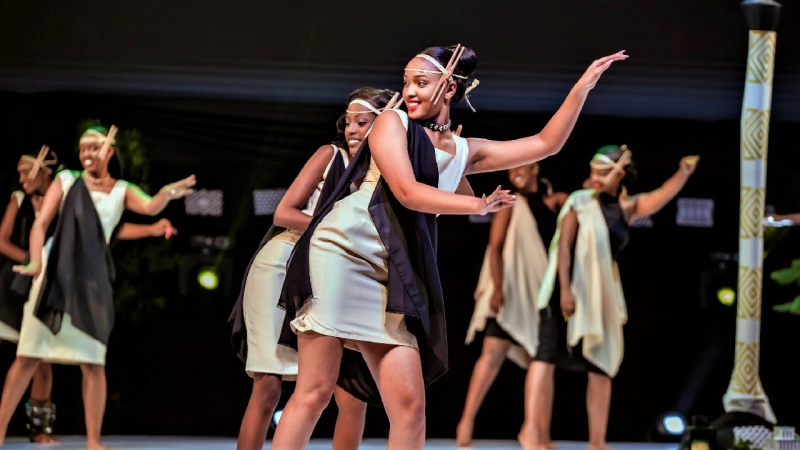
https://www.youtube.com/ 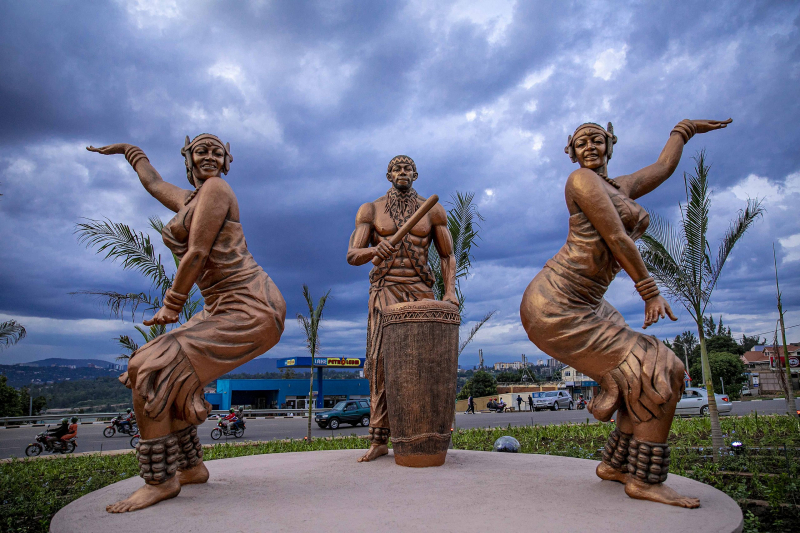
https://commons.wikimedia.org/ -
Traditional arts and crafts are produced throughout the country, though the majority began as functional rather than decorative items. Woven baskets and bowls are particularly popular. Other arts and crafts include pottery/ceramic, painting, and wood carving, which are mostly made by artist students from Ecole d'Art de Nyundo, Rwanda's one-of-a-kind art school from 1959 to the present, where there are other different institutions that are attempting to train visual and audio arts today.
The south-eastern region of Rwanda is famous for imigongo, a unique cow dung art that dates back to the time when the region was part of the independent Gisaka kingdom. Cow dung is used to create the images, which are then applied to wooden boards in spiral and geometric patterns. The dung is mixed with ash, which kills bacteria and odors, and then hardened before being decorated with organic material colors. Traditional colors include black, white, red, grey, and beige-yellow, but other colors are increasingly being used. This is considered as one of the Unique Cultural Characteristics In Rwanda.
During the 18th century, the imigongo images were discovered inside the walls of huts in Kibungo as "magical" decorations. According to legend, Prince Kakira of Gisaka Kingdom in Nyarubuye invented imigongo as an interior decoration in the 1800s.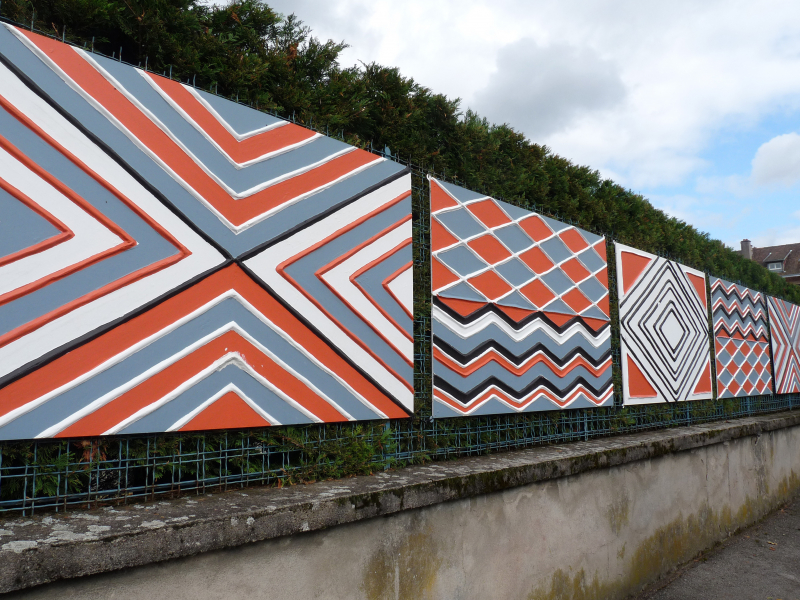
https://en.wikipedia.org/ 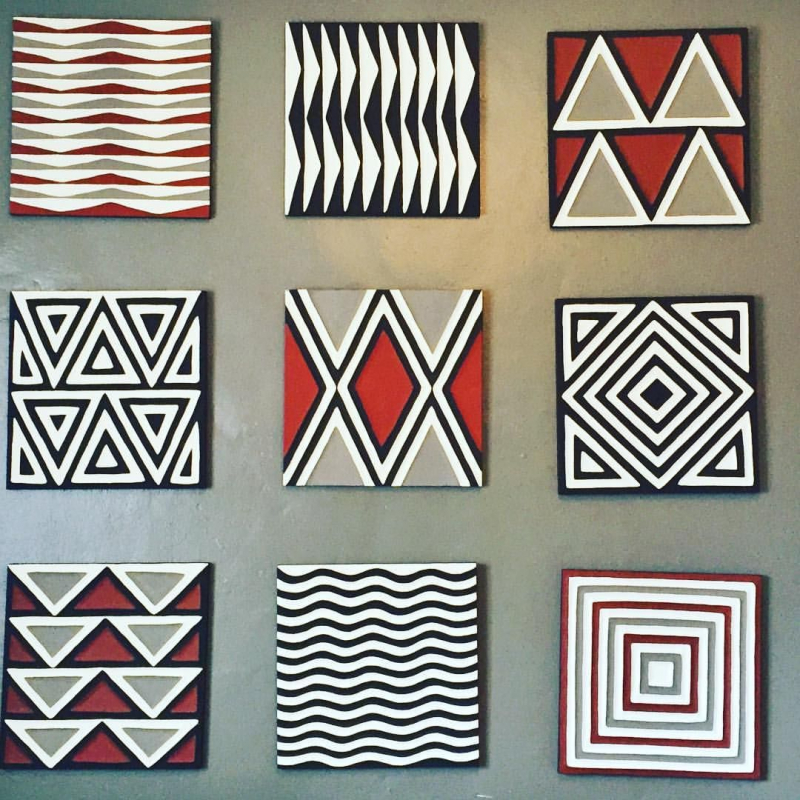
https://www.pinterest.com/ -
Sport in Rwanda was traditionally a form of celebration, a friendly competition between community members during feasts and holidays, or a way to honor visiting dignitaries. Friends and family, particularly young men, would compete in events such as wrestling, high jumping, archery, and hurling a lance through a moving hoop.
Rwanda's modern sporting era began gradually in the middle of the twentieth century, with increased exposure to international sports such as football (soccer), volleyball, track and field (athletics), and, later, basketball. Football is the country's most popular team sport. Regular league play is held between senior and junior clubs, with the Rwanda Équipe Nationale de Football featuring the more accomplished players.
Rwanda made its Olympic debut in 1984, when runner Marcianne Mukamurenzi drew international attention for her unconventional training regimen; while working as a mail carrier and messenger for the Rwandan Ministry of Youth, Sport, and Culture, she sped from one destination to the next, making deliveries across Kigali's hilly terrain entirely on foot. Though the country has yet to win a medal, several athletes have performed admirably, including Mathias Ntawulikura and Ildephonse Sehirwa.
Sport in Rwanda is supported by the Rwandan government's Sports Development Policy, which was implemented in October 2012. This article contends that sports have a variety of benefits, including bringing people together, increasing national pride and unity, and improving health. The policy identifies obstacles to the development of sport in the country, such as a lack of infrastructure and financial resources. The most popular sports in Rwanda, according to research published by the University of the Western Cape's Interdisciplinary Centre of Excellence for Sport Science and Development, are association football, volleyball, basketball, athletics, and paralympic sports.
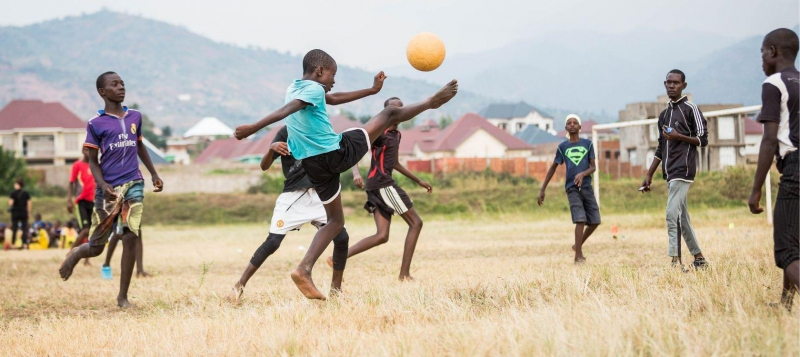
https://www.afd.fr/ 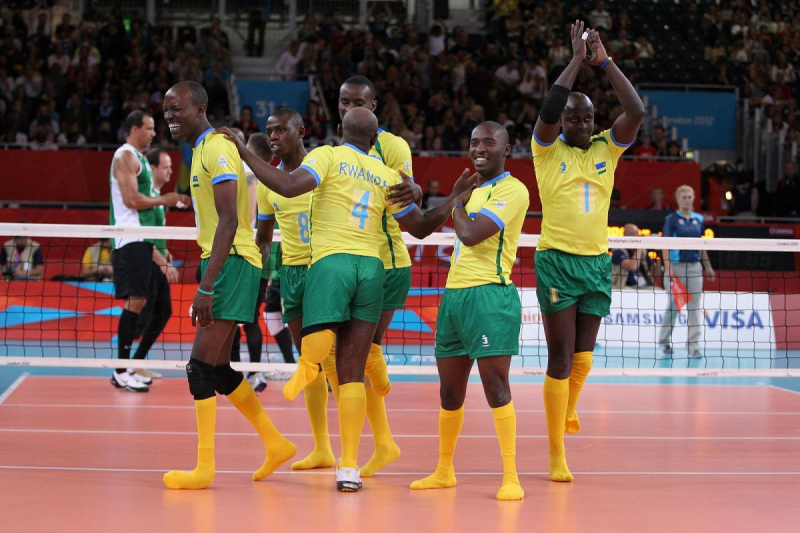
https://www.paralympic.org/ -
In most cases, a handshake is appropriate when men greet each other. Handshakes are often energetic and linger throughout the greeting process and, in some cases, the entire conversation, which may include walking where it is customary to continue to hold/shake hands. When shaking hands, it is customary to grasp the right forearm with your left hand as a sign of respect/deference. A low hand slap is common in casual situations. Many men also share a light touch of the right side of their forehead to the left side of the other person's forehead.
In most situations, a woman should greet another woman with a handshake and/or a nod of acknowledgement. When shaking hands, you can also place your left hand over your right elbow/forearm to show respect. Women frequently hold hands with other women, and the handshake is frequently extended into this hand-holding. Close friends and family members typically hug and kiss each other on the cheek, alternating sides. If you're unsure what to do, simply follow your Rwandan counterpart's lead.
Greetings for Men and Women - Appropriate greetings vary according to the nature of the relationship and the region. A handshake is usually appropriate, but if the woman does not extend her hand, a bow or nod of acknowledgment will suffice.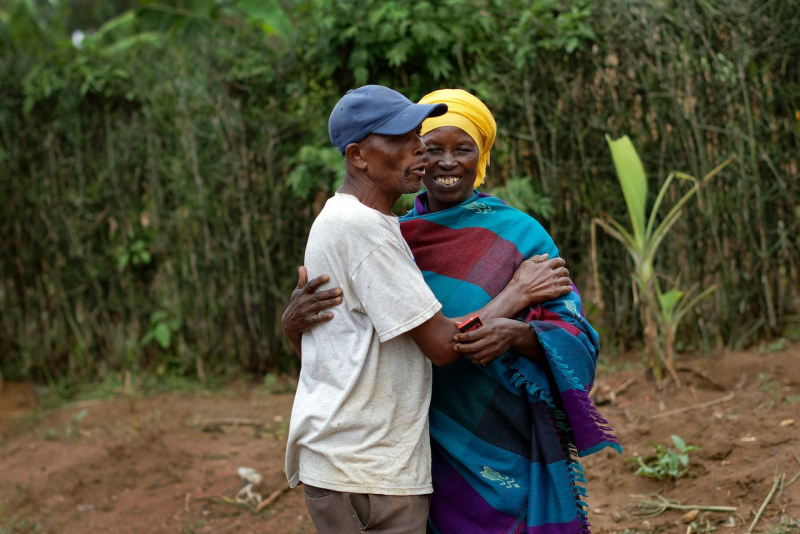
https://www.cbc.ca/ 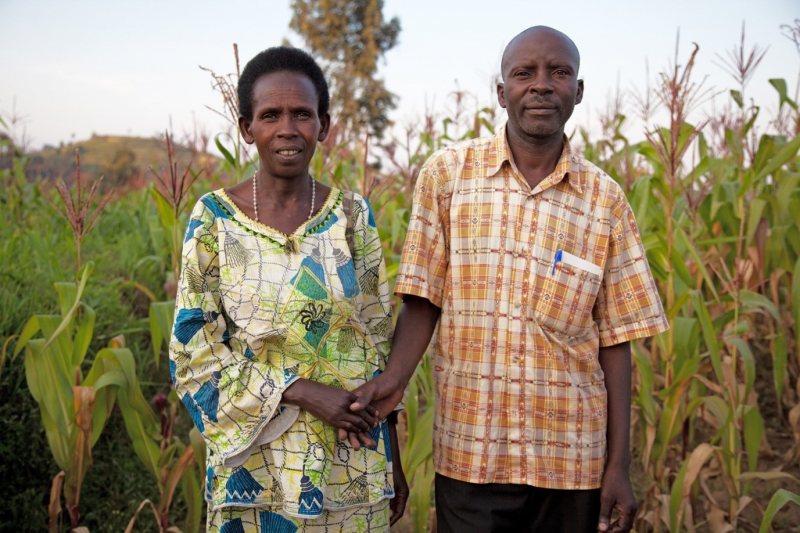
https://www.peacedirect.org/ -
What do Rwandans wear? Rwandans dress differently depending on what they do, whether casual or office work. For example, casual laborers dress differently than office workers, and children in educational institutions dress differently. But, of course, all zeros to a common link where you find that Rwandans are known for a specific dress code. This is one of the Unique Cultural Characteristics In Rwanda.
Rwandan women traditionally wear Musanana, which consists of a floor-length skirt with a sash draped over one shoulder and worn over a tank top or bustier. Ladies wore their hair in a bun decorated with beads and held in place by two ribbons that cross the forehead and over the bun, crossing above the ear. A comb is placed above one ear beneath the crossing point of the flags to dress up traditional Rwandan women.
Men, on the other hand, would wear a Western-style dress shirt tucked into a floor-length wrapped skirt. A beaded necklace can be worn with this outfit, especially at weddings, or by musicians during traditional dance and cultural drama performances. Male dancers wear a wrapped skirt without a shirt and beaded straps that cross over the chest. All of these were traditional dress codes for Rwandan men and women, but they are still worn today, especially at traditional functions and visitor entertainment centers.
People in Rwanda dress well for work, especially if they hold important positions. In Rwanda, being smart does not always imply wearing a jacket and tie, but an untidy appearance is often frowned upon. Thus, the dress code for Rwandans varies according to gender, weather, and the nature of one's job.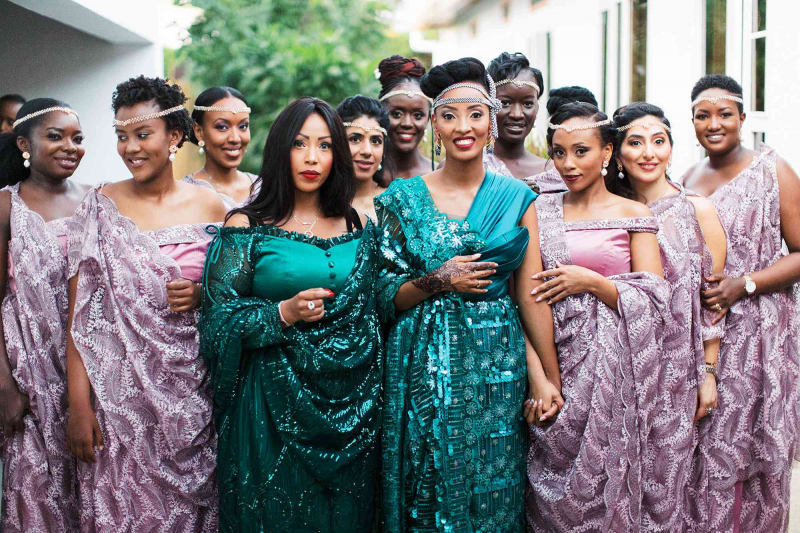
https://danddclothing.com/ 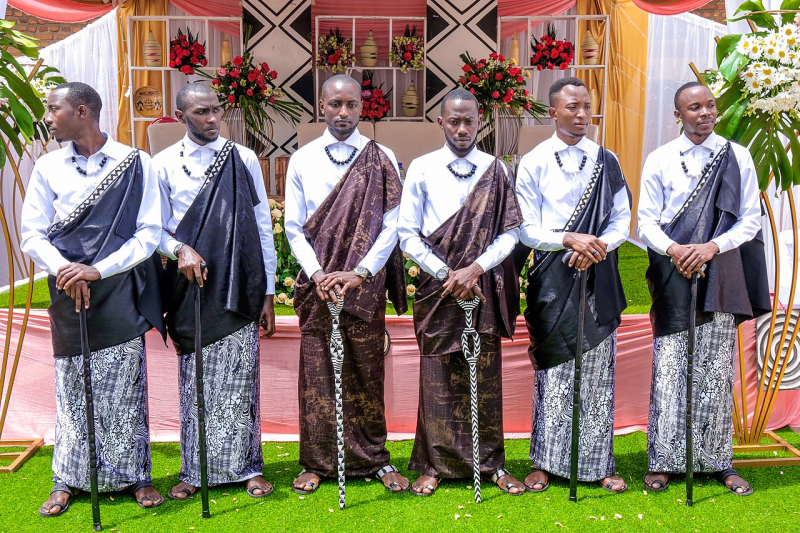
https://commons.wikimedia.org/ -
Rwandans prefer face-to-face and long meetings because they are a collective and relationship-based culture. People do not always respect the start, break, and end times that Anglo and Asian cultures do. It is critical that you do not become clearly frustrated by this flexible approach to time, as relationships are seen as far more important than time-related issues.
When meeting a Rwandan for the first time, stick to broad topics such as the weather. Avoid inquiring about their ethnicity, especially since Rwanda is making strides toward unifying the country as one people and one culture. Because Rwandan meetings are non-confrontational and hierarchical, they are sometimes led and dominated by the manager. People rarely express their opinions unless they are asked.
The dress code for meetings is primarily semi-formal; a lightweight suit for men or a dress with a hem below the knee for women is appropriate. Most meetings will have an agenda, but don't count on it being followed. People will try to cover all of the issues on the agenda, but they will not always follow the order on the written document. Occasionally, an unexpectedly raised issue will consume half of the meeting's time.

https://afktravel.com/ 
https://afktravel.com/












